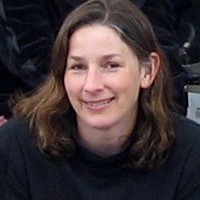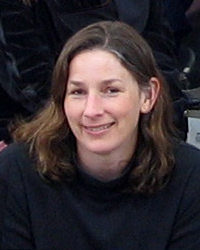 Tuesday, March 13, 2:00-3:15PM
Tuesday, March 13, 2:00-3:15PM
1111 School of Architecture (Building 145)
“A Conversation about Compulsion, the World’s Columbia Exposition of 1893, and Virtual Reality” by LISA M. SNYDER
Is there a place for virtual reality in the digital humanities toolkit? For all of the early hype surrounding the use virtual reality for teaching and learning and the ubiquity of online options for exploring three-dimensional worlds, the challenges inherent in developing and sustaining large-scale academic reconstruction projects limit their viability and likelihood for success.
Academics considering such foolishness must contend with disciplinary skepticism, the need to articulate appropriate research questions to justify the effort required to produce tangible results, and pressure to develop methodologies for annotations and citations that are comparable to print publications. From a project management perspective, three-dimensional research is difficult because it requires a specific start-up environment, ongoing funding beyond that typically available to the humanities researcher, and a clearly defined ultimate use for the eventual product that justifies the expended effort. From a curricular perspective, virtual reality research exists only on the borders of digital humanities as it is currently defined. In order to fully integrate three-dimensional research into the curriculum, administrators need to contend with issues of scalability, the availability of software, a need for clearly defined learning objectives, and a steep learning curve that can negatively impact student projects.
Working from the conviction that virtual reality – even given these daunting challenges – does provide significant research opportunities for academics and benefits to student users, this presentation will focus on the reconstruction projects that are the hallmark of three-dimensional research at UCLA. Following a demonstration of the World’s Columbian Exposition project currently under construction, Snyder will discuss her project team’s efforts to leverage existing and new computer modeling work for pedagogical use through a new NEH-funded real-time software interface and content repository intended to provide a mechanism for exploring highly detailed three-dimensional models in educational settings.
This talk will be held at the School of Architecture (Building 145), Room 1111. The event will begin at 2:00 p.m., followed by a reception in the Dean’s Conference Room.
Dr. Lisa M. Snyder is a senior member of the Urban Simulation Team at UCLA, an associate director of the Experiential Technologies Center, and on staff with the Institute for Digital Research and Education, a division of UCLA’s Office of Information Technology. Her research is focused on the educational use of large-scale interactive computer reconstructions of historic urban environments.
Snyder is currently working on a real-time reconstruction of the World’s Columbian Exposition held in Chicago in 1893. This work is regularly showcased at the Museum of Science and Industry in Chicago and appears in the documentary Make No Little Plans: Daniel Burnham and the American City. She is also a principal investigator on an NEH-funded project team that is developing a new interface to facilitate classroom use of interactive computer reconstructions. This run time software was designed to accommodate a range of student-centered activities and teacher-centered presentations within a framework that provides secondary scholars access to the historical evidence, methodologies, and interpretive choices that informed the creation of the virtual world.
Snyder was the primary modeler on the interactive computer reconstructions of the Temple Mount site that were developed jointly by the Urban Simulation Team and the Israel Antiquities for the Davidson Center in the Jerusalem Archaeological Park. The Herodian version of the model was installed in 2001. The reconstruction was based on excavations conducted under the direction of archaeologist Ronny Reich and regional archaeologist Gideon Avni, and it shows visitors how excavators believe the Temple Mount appeared prior to its destruction by Roman troops in the year 70 C.E. In 2007, an expanded version of the simulation model was unveiled that includes a reconstruction of the early Islamic structures on and around the Temple Mount based on excavations at the site conducted under the direction of Jerusalem district archaeologist Yuval Baruch. Beyond the Davidson Center, this work has been featured in installations at the Gulf Coast Exploreum Science Center, the Royal Ontario Museum, the Science Museum of Minnesota, the Frankfurter Bibelgesellschaft, and the Oriental Institute Museum at the University of Chicago.
A continuously updated schedule of talks is also available on the Digital Dialogues webpage.
Unable to attend the events in person?
Archived podcasts can be found on the MITH website, and you can follow our Digital Dialogues Twitter account @digdialog as well as the Twitter hashtag #mithdd to keep up with live tweets from our sessions.
All talks free and open to the public. Attendees are welcome to bring their own lunches.
Contact: Emma Millon, Community Lead, MITH (http://mith.umd.edu, mith@umd.edu, 5-9887).

